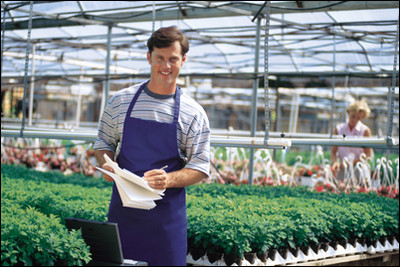In my grandmother’s day there was no talk of being “green.” They used pesticides like water and fertilizers that could make a stream eutrophic in four seconds flat (a bit of an exaggeration). However, they did do some things very well, such as sourcing locally. Without the interstate highway system and 747s jetting bananas from South American rain forests, they needed to produce food that was either longer lasting to survive a journey or grown locally to be eaten fresh. Every home on her block had a victory garden and they knew the butcher who cut the meat from a side of beef that days before was grazing the grass just outside of town. Just think of all the carbon they did not put into the atmosphere by sourcing locally. With today’s farming methods and a bit of elbow grease (it takes a green thumb, too, but that can be learned) we can all take a lesson from Grandma.
Speaking of “urban farming,” there is a family that produces 6,000 pounds of edible fruits, vegetables and flowers annually on a fifth of an acre. Granted, they live in Pasadena, Calif., so they have multiple growing seasons, but if you use them for inspiration you will be able to source locally some of your own food. And there is just something incredibly satisfying about cutting up and eating a tomato you grew in your own garden. So, start saving the planet by sourcing locally, namely your backyard and a local farm, because they just don’t let you raise cattle in your backyard in Chicago like they used to. Not only would this help the environment, it would also help reduce the global demand for food and by proxy reduce the price of ethanol (produced with corn) to fuel your car.
Credit: New York Times Magazine




























